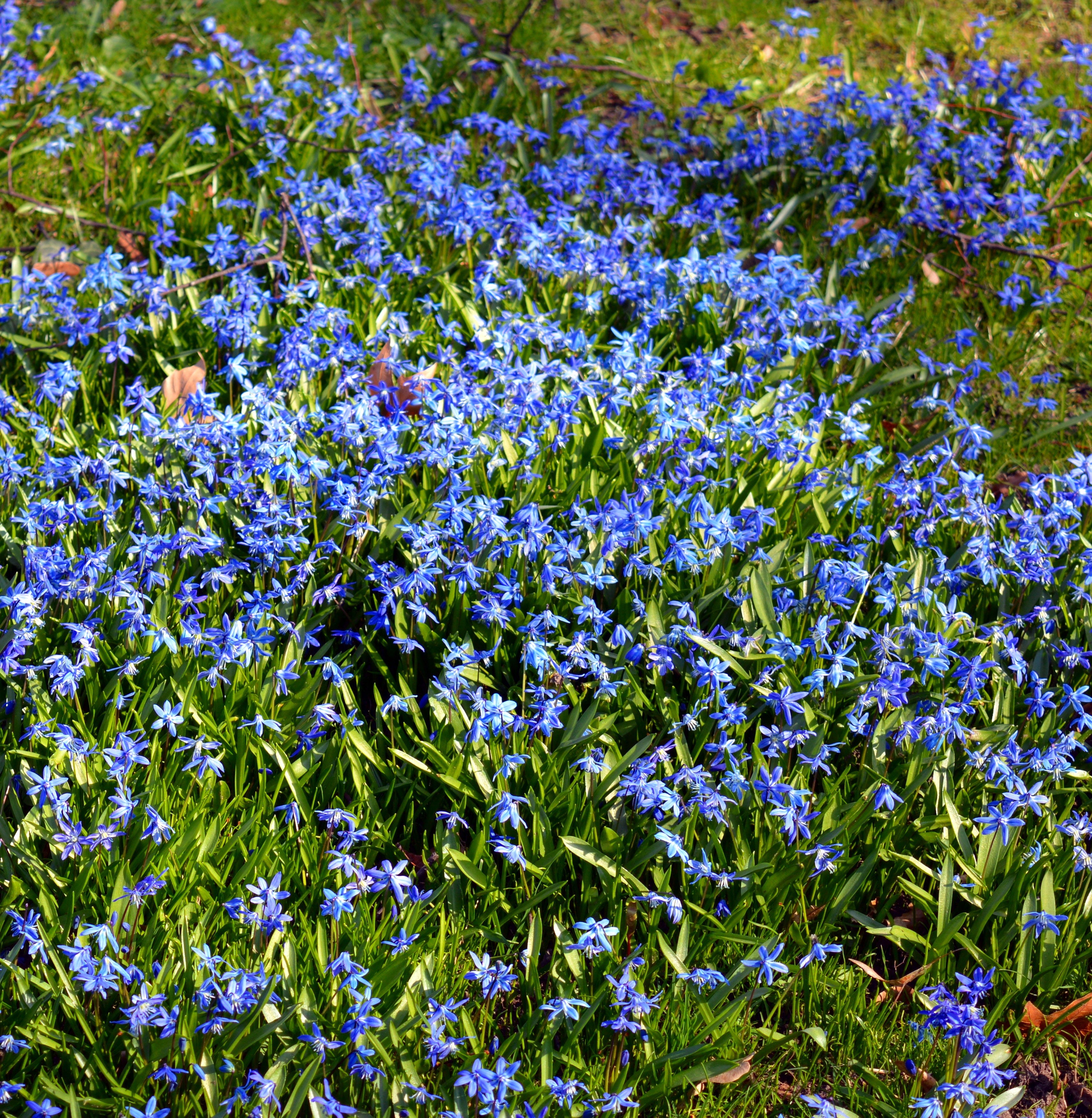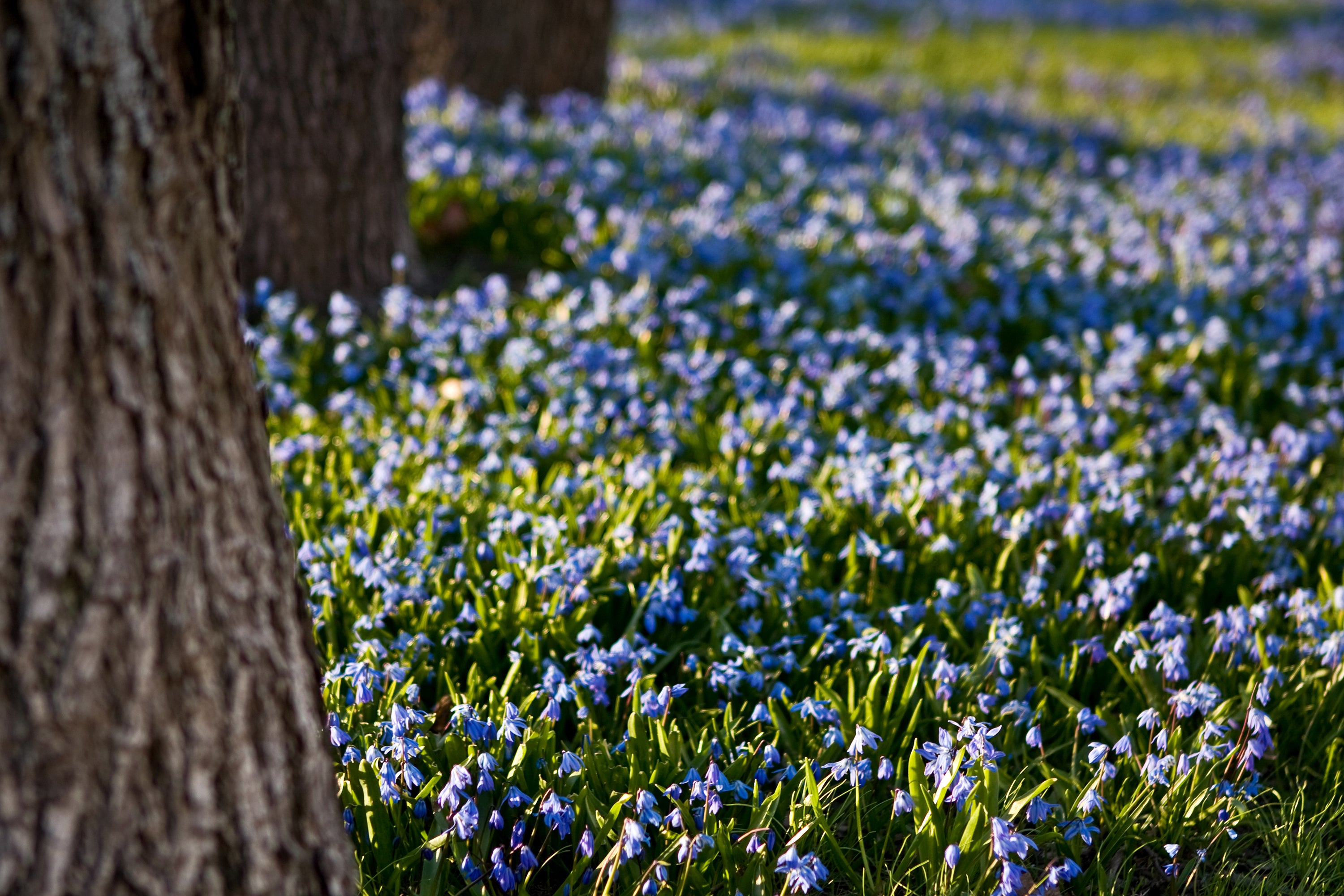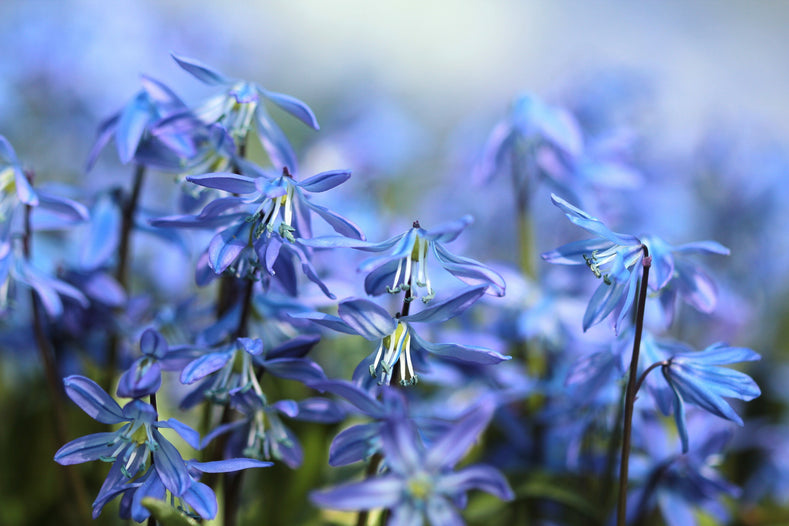Scilla Siberica – The Hardy Naturalizer
Though maybe not as famous as its fellow early bloomers Snowdrops and Chionodoxa, Scilla Siberica is a flower bulb that is well worth getting to know. Despite what its name suggests, it does not actually come from Siberia, originating in Russia, the Caucasus and Turkey instead. It has however taken on the characteristics of Siberia’s inhabitants, as it is incredibly tough and still thrives in hardiness zones where other flower bulbs would simply refuse to grow.
Swathes of blue
In early spring you’ll first see the slender, strappy leaves coming up, soon followed by frail spikes sporting bell-shaped, hanging blooms in a deep, intense light-blue shade. Avid gardeners have long known that that the main quality of Scilla Siberica, apart from its hardiness, is its incredible naturalizing power, meaning that it will come back every year, and with many more than before. This makes it ideal for planting in lawns, as well as under trees and shrubs that will bloom much later than Scilla Siberica. After only a few seasons you’ll find that for a few weeks every year your garden will be covered in a beautiful blue carpet.

The meaning of Scilla Siberica’s name
There are various explanations about the meaning of the first part of its name, Scilla: Some say that it comes from the Greek name skilla for sea-squill, a foxtail-like white flower. Others say that it comes from the Latin for “similar plant” or even the Greek “to hurt or harm”. This last meaning is not completely beside the point, as Scilla Siberica will cause severe discomfort when eaten, both by humans and by dogs.
When to plant Scilla Siberica
Like most flower bulbs, Scilla should be planted in fall. Wait until the temperatures are starting to dip and find a place in your garden that has full sun or dappled shade and, most importantly, well-draining soil. If bulbs are planted in soil that gets waterlogged easily, they will rot before they have a chance to bloom.

How to grow Scilla Siberica
Plant the Scilla bulbs with their pointy ends up, about 2-3 inches deep and 4 inches apart. To get the maximum effect, both next spring and the seasons after, be sure to plant them in large drifts. Water well after planting. When deer are the main pests in your garden, you’re in luck, because they don’t like Scilla. Unfortunately, chipmunks and other rodents are not that picky and may dig up the bulbs and eat them.
When does Scilla Siberica bloom?
Depending on where you live, Scilla blooms in March or April. This means you can combine it very well with Chionodoxa, and Scilla might even stay around to welcome the first Daffodils. With its lovely light fragrance, Scilla Siberica is also extremely attractive to bees, who like it because of its nectar and pollen-rich flowers.
How do you care for Scilla Siberica?
Since Scilla flowers in the cooler months of spring, it doesn’t need much maintenance. Just be sure to not mow the foliage off until at least six weeks after the flowers have bloomed. The plants need this time to retrieve energy from the foliage, energy they will use to divide and grow again next season.

Scilla Siberica in pots
To plant Scilla in a pot or container, follow the same steps as above, but instead of planting in the ground, fill a large, well-draining flowerpot with good-quality, well-draining soil. Plant the bulbs with their pointy ends up about 2-3 inches deep. In pots you can plant flower bulbs a bit closer together than in the garden, but make sure they don’t actually touch. Water well after planting and either store them in a cold, dry place like an unheated basement or garage or, when you live in a warmer area, leave them outside all winter long.
Scilla Siberica’s sister
Scilla Siberica has many more family members, but the one that resembles it the closest is Scilla Tubergeniana or White Squill. Just as fragrant and lovely, the petals of this variety are a bright white with a tender blue pencil stripe in the center.
Scilla Siberica for punctual planting
Ready to be greeted by a blue flower carpet come spring? Head on over to our website, where we’ll guide you through the ordering process. We’ll make sure you Scilla Siberica flower bulbs arrive at the perfect time, so you can plant them straight away.




